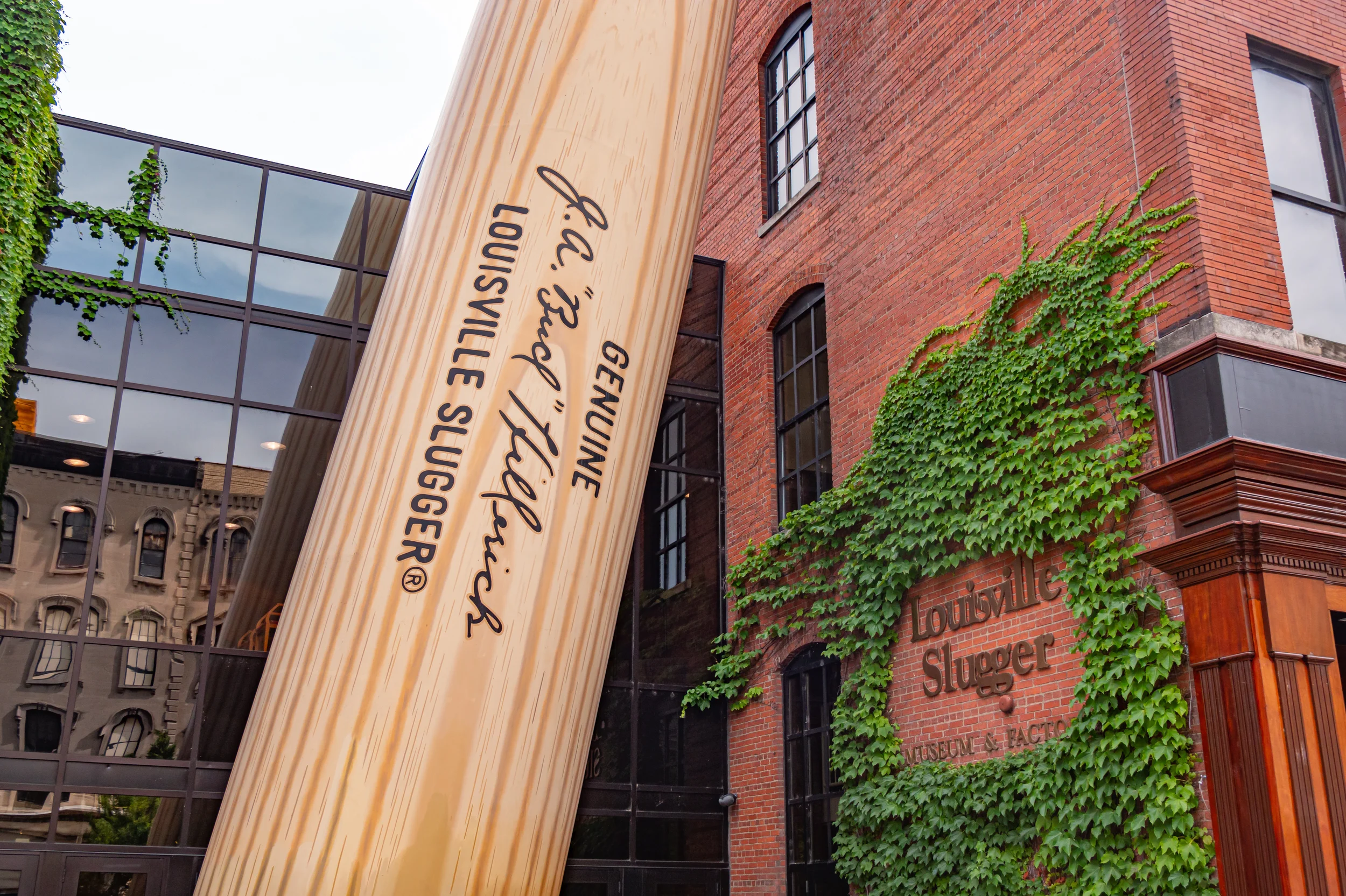The story of the Louisville Slugger begins in 1884, when Bud Hillerich, a young apprentice at his father's woodworking shop in Louisville, Kentucky, crafted a bat for professional baseball player Pete Browning. Browning, a local player for the Louisville Eclipse, was struggling with his performance and asked Hillerich to make him a custom bat. After using the bat, Browning had a strong performance, and it quickly gained a reputation for being a high-quality bat. This marked the birth of the Louisville Slugger brand.
Hillerich founded J.F. Hillerich & Son in 1884, which would later become the Hillerich & Bradsby Company. Over the next several decades, the company grew in prominence, and the Louisville Slugger became the bat of choice for many major league players. By the 1910s, the Louisville Slugger had become one of the most well-known baseball bat brands in the world.
The Museum and Factory's Origins
The Louisville Slugger Museum & Factory opened in 1985 to celebrate the rich history of the bat and its connection to the sport of baseball. The museum is housed in a building in downtown Louisville, located on the site of the original factory where the bats have been made for over a century. The museum serves as both a tribute to the bat and a working factory where visitors can watch the bat-making process firsthand.
Key Exhibits and Attractions
The museum offers a range of exhibits that explore both the history of baseball and the manufacturing of the Louisville Slugger bat. Visitors can learn about the process of crafting these iconic bats, which are made from the finest quality ash and maple wood. The museum also showcases the bats used by some of baseball's greatest players, including Babe Ruth, Hank Aaron, and Ted Williams. One of the most famous exhibits is a massive, life-sized replica of a Louisville Slugger bat—a 120-foot tall, 68,000-pound bat—that leans against the building, drawing visitors from all over the world. Please don't try to pick it up!
In addition to honoring the legacy of the bat, the museum tells the broader story of baseball's evolution, highlighting key moments in the sport's history, including the challenges of segregation, the role of baseball in American culture, and the achievements of some of the game's greatest athletes. The real deal is just inside: Babe Ruth's 1927 Louisville Slugger. Used to hit 21 home runs, there are corresponding notches on top of the bat carved by Ruth, himself. And that's not all - there are bats here from some of baseball's greatest hitters, past and present, including Mickey Mantle, Cal Ripken Jr, David Ortiz, Derek Jeter, and Johnny Bench.
Along with the bats and other baseball memorabilia, there are interactive displays, a batting cage, a replica dugout and, of course, the opportunity to take a tour of the factory, where you can see Hillerich & Bradsby bats and golf clubs as they go through production.
The Hillerich & Bradsby Company
While the museum showcases the history of the bat, it is also important to note that the Hillerich & Bradsby Company (the parent company of Louisville Slugger) has remained a significant force in the sports equipment industry. The company not only produces the famous bats but also makes other sporting goods, including golf clubs, hockey sticks, and gloves. In fact, Louisville Slugger's legacy extends beyond baseball into many other sports.
Modern Day and Cultural Impact
Today, the Louisville Slugger Museum & Factory is a top destination for baseball fans and tourists alike, attracting visitors from around the world. It continues to celebrate the intersection of baseball and American culture while offering a glimpse into the craftsmanship behind the famous bat. Through its exhibits, educational programs, and interactive experiences, the museum preserves the history of the bat and its significant place in the sport's past and present.
The museum also hosts a variety of special events, from autographed bat auctions to baseball-themed educational programs, and it remains an essential part of Louisville's cultural fabric. The tradition of the Louisville Slugger bat continues to thrive, and the museum offers a place to experience the history and the ongoing impact of this iconic piece of sporting equipment.
